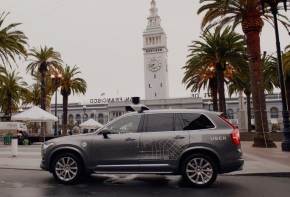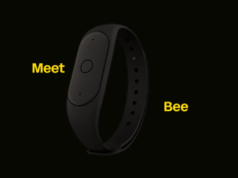NEWS ANALYSIS: After three months of testing in Pittsburgh, Uber brings its self-driving fleet to the more challenging streets of San Francisco.
The move by Uber to launch a fleet of self-driving cars in San Francisco is not unexpected. After all, Uber is based in San Francisco and the company has had a strong business presence in the city since its earliest days. What wasn’t expected is that it would happen so quickly.
After its surprising announcement in September 2016 that the company would begin operating self-driving versions of Ford Fusion Hybrid cars in Pittsburgh, many observers, including me, thought it would take six-months to a year of testing within shouting distance of the engineers at Uber’s Advanced Technology Group and the robotic scientists at Carnegie Mellon University. That didn’t turn out to be the case.
Instead, on Dec. 14, 2016, Uber rolled out its new fleet of Volvo XC-90 SUVs to start providing rides in San Francisco. The new Volvo vehicles include an internally-mounted supercomputer along with a custom integrated cooling systems for the computer and the integrated storage. The cars have GPS positioning systems and a series of sensors to help the car’s computer know specifically where the car is located at any given time.
A series of other sensors helps the car and its computer figure out what the traffic is like while it’s moving through the city. Those sensors include LIDAR (light direction and ranging) in which a laser sensor in a spinning device maps out a 360-degree picture of the car’s surroundings as it moves.
The sensor package includes radar for detecting other vehicles, pedestrians and other objects in the car’s vicinity, and a series of cameras that watch for obstacles, as well as traffic events such as braking and for signage.
Uber intends to use the automated Volvos in its normal Uber-X service, which means that when a customer requests a ride in the Uber app, they might be assigned a self-driving car. According to a blog entry by Anthony Levandowski, Head of Uber’s Advanced Technology Group, a self-driving Uber car will be sent if one is available.
Uber said a press release about the new that prospective riders will have the opportunity to decline using a self-driving car and instead get a ride from a car with a human driver.
Levandowski said in his blog entry that the Volvos were chosen for the San Francisco test because the company’s safety and development record. “Expanding our self-driving pilot allows us to continue to improve our technology through real-world operations,” he said. “San Francisco comes with its own nuances including more bikes on the road, high traffic density and narrow lanes.”
While Uber looks at self-driving cars as part of the necessary mix of both human-operated and autonomous cars, the company isn’t really going fully to self-driving vehicles at first. Levandowski said that Uber was going to have people in the driver’s seat of the cars to monitor its performance. Apparently this satisfies California’s rules about requiring a testing permit for such cars since someone will still be in the driver’s seat.
The test permit requirement is apparently a big deal in the Bay Area, unlike Uber’s previous test city of Pittsburgh. The Uber blog goes to great lengths to explain the company’s position and state the reasons why it believes that municipalities need to ease up on local regulations regarding self-driving cars.
Levandowski points out that other states and localities don’t have such restrictions, which is one reason the Uber test began in Pennsylvania.
“Most states see the potential benefits, especially when it comes to road safety,” Levandowski said in his blog entry. “And several cities and states have recognized that complex rules and requirements could have the unintended consequence of slowing innovation. Pittsburgh, Arizona, Nevada and Florida in particular have been leaders in this way and by doing so have made clear that they are pro technology.”
While California certainly can’t be accused of being anti-technology, the state is also pro-regulation, and that’s what the managers at Uber are complaining about—that excessive regulation my may hurt innovations.
A few weeks before testing began in San Francisco, another autonomous vehicle test pointed out just how capable some efforts have become.
In Colorado autonomous truck company Otto demonstrated a critical capability that goes beyond much of what Uber has attempted. There, in a test partnering with Anheuser-Busch, Otto made the first autonomous truck delivery between Fort Collins and Colorado Springs, including a drive through the city streets of Denver. The critical cargo in this first delivery of its type was 51,744 cans of beer.
The Otto test truck made an end to end trip without human intervention over the public highways in Colorado, with full cooperation by the State of Colorado. There was a driver on board the Otto test truck, but he watched the whole thing unfold from the sleeper berth in the back of the truck.
There’s no question that self-driving technology is coming in the short term, although for now it’s farther along for trucks than for cars. Part of the reason may be the powerful economic incentives based in safety and efficiency for trucks, but the technology is clearly maturing.
The biggest stumbling block seems not to be the technology, but rather the readiness for the technology, especially by states and localities unused to change.







